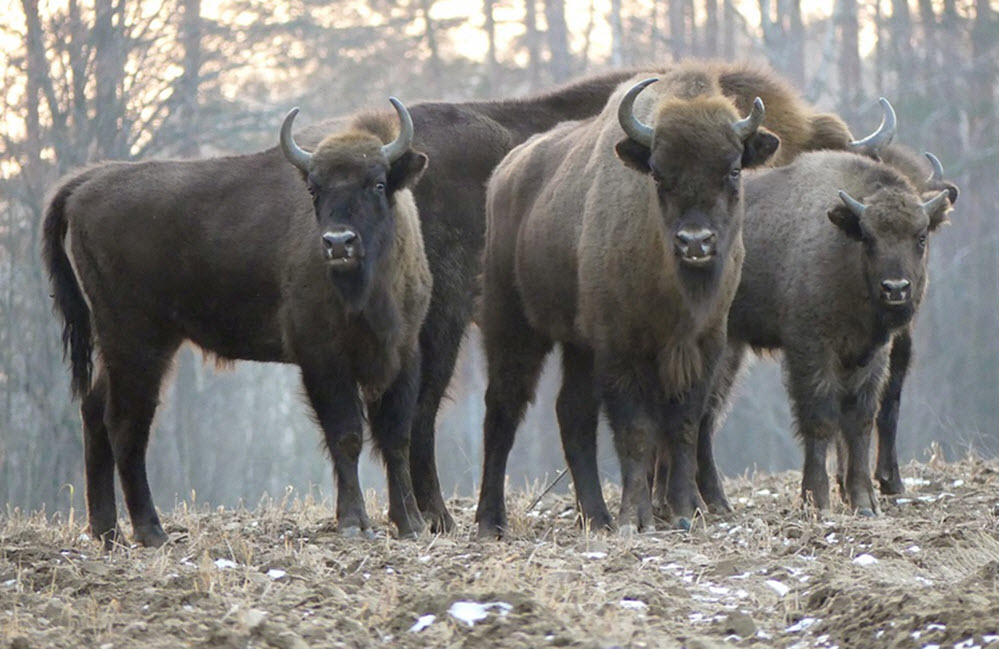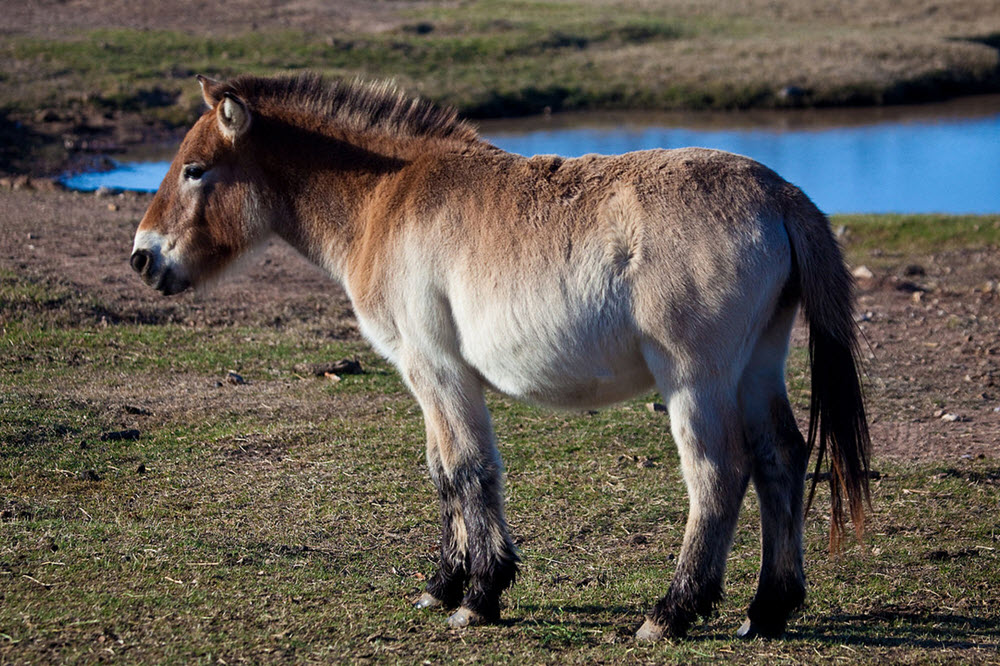Pleistocene rewilding in Europe
Contents
Many rewilding project is currently being carried out in Europe. Below, we will take a look at two large animals (megafauna) that have been introduced or re-introduced to parts of Europe. You can also find a lot of information on our page about the Rewilding Europe initiative.
European bison

The European bison (Bison bonasus) is also known as European wood bison and wisent. The species became extinct in much of Europe and Asian during late antiquity and the Middle Ages, but survived in northern-central Europe and the northern Caucasus mountains until the early 1900s. The last wild specimens were shot in the 1920s. Efforts to restore the species in the wild started that same decade, and the Bison Restitution Centre was founded in Poland in 1929.
Today, several thousand European bisons live in Europe thanks to re-introductions from captive-breeding programs. It is not longer considered an endangered species by the IUCN.
Roughly half of all European bisons in the wild or semi-wild live in Poland and Belarus. Examples of other countries with free-ranging European bison are Bulgaria (the rewilding project in the Rhodope Mountains), France (in the Alps, near Thorenc), Germany (the Rothaarsteig Natural Reserve), Lithuania (over 200 free-ranging bisons), Netherlands (where they live together with Przewalski´s horses), Romania (re-introduction took place as early as 1958), and Slovakia (also did the re-introduction in 1958).
Like many other large grazing animals, the European bison is used in European rewilding projects where the desire is to achieve a wild open landscape rather than one that gradually turns into forest. This is an effort to mimic such environments that existed during Pleistocene, when large herds of ungulates kept landscapes open by eating small trees that tried to establish themselves. Large ungulates can also disturb the soil in a way that makes it more difficult for a forest. to take over the landscape.
Przewalski´s horse

Przewalski´s horse (Equus ferus przewalskii) has been introduced to several European countries, including Ukraine, Hungary, the Netherlands, and France. This subspecies is not native to Europe, but is used as proxy for the robust wild horses that once lived in Europe.
Przewalski´s horse is native to the steppes of Central Asia. It did go extinct in the wild, but has since then been re-introduced from captive breeding programs to parts of its native range in Central Asia, including Mongolia.
Przewalski´s horse was long considered the only extant truly wild horse, in contrast to feral wild-living horses such as the mustangs in North America and the brumby horses of Australia. Today, analyses of remains found in association with the ancient Botai culture of Central Asia has made this claim more conflicted.
About wild horses
Equus ferus is believed to have evolved in North America over 1,1 million years ago. Roughly 800,000 years ago, some populations migrated from North America to Eurasia using the Bering Land Bridge, and horses eventually also reached the African continent. Similarly, other populations migrated from North America to South America via the Isthmus of Panama. By mid-late Pleistocene, horses were living across the Americas, Eurasia and north Africa.
The wild horses in the Americas died out during the Quaternary extinction event, but populations in Eurasia and north Africa survived. Domestication took place around 3600 BCE.
The Eurasian wild horse, Equus ferus ferus, was still fairly common in many parts of Europe until the 1700s, when they disappeared from most of the mainland of western Europe and declined in eastern Europe. In areas where they remained, they often produced hybrids with domestic horses. The last Eurasian wild horse is said to have died in captivity in the Russian Empire in 1909, but it is unclear if this was a pure wild horse or a hybrid.